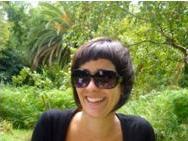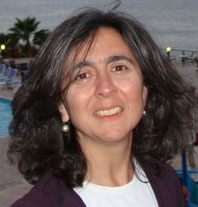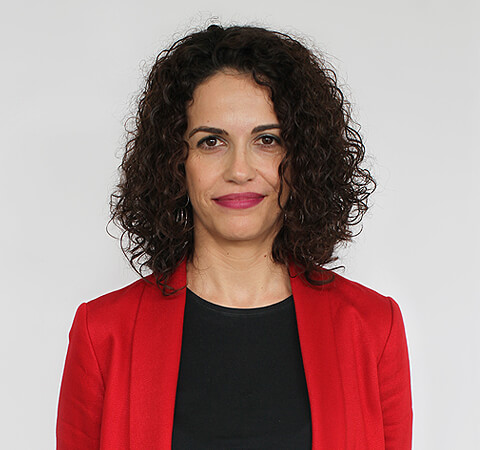PhonBank Portuguese CCF Corpus

|
Susana Correia
Dept. of Social Sciences and Humanities
Universidade Nova de Lisboa
susanacorreia@fcsh.unl.pt
website
|

|
Maria João Freitas
Linguistics
University of Lisbon
joaofreitas@fl.ul.pt
website
|

|
Teresa da Costa
Faculty of Exact Sciences and Engineering
Universidade de Madeira
teresa.costa@staff.uma.pt
website
|
| Participants: | 5 |
| Type of Study: | naturalistic |
| Location: | Portugal |
| Media type: | audio |
| DOI: | doi:10.21415/T53034 |
Browsable transcripts
Phon data
CHAT data
Link to media folder
Citation information
Correia, Susana, Teresa da Costa & Maria João Freitas (2010). Corpus of
European Portuguese Phonological Development. University of
Lisbon/CLUL/PhonBank.
Correia, Susana (2009). The Acquisition of Primary Word Stress in
European Portuguese. Ph.D. Dissertation. University of Lisbon.
Costa, Teresa da (2010). The Acquisition of the Consonantal System in
European Portuguese. Focus on Place and Manner Features. Ph.D.
Dissertation. University of Lisbon.
In accordance with TalkBank rules, any use of data from this corpus must be accompanied by at least one of the above references.
Project Description
| Name | Age Range | Sessions | Sex
| | Clara | 0;11 - 1;10 | 12 | F
|
| Inês1 | 0;11 - 4;2 | 30 | F
|
| Joana1 | 0;11 - 4;10 | 33 | F
|
| João | 1;0 - 2;0 | 22 | M
|
| Luma | 0;11 - 2;6 | 38 | F
|
Joana and Inês were recorded and partly transcribed by Maria João
Freitas. The data were later and further transcribed and revised by
Susana Correia, Teresa Costa and Maria João Freitas. For information on
early transcriptions and analyses, see European Portuguese-Freitas in
this manual and Freitas (1997).
This corpus is contained within the Acquisition of European Portuguese
Databank (AcEP –
www.clul.ul.pt/en/research-teams/476-acquisition-of-european-portuguese-
databank), in CLUL's research group ANAGRAMA. The research work
underlying Correia, Costa & Freitas (2010) was funded by Portuguese
Science Foundation (research project PTDC/LIN/68024/2006) and two
individual PhD research grants awarded to Susana Correia
(SFRH/BD/21696/2005) and Teresa Costa (SFRH/BD/2844/2006) by the same
Foundation.
Correia, Costa & Freitas (2010) contains data from 5 European Portuguese
monolingual children during 135 recording sessions. The children’s
speech was recorded every other week in the case of João and Luma, and
monthly in the case of Inês, Clara and Joana. The data were recorded at
the children’s homes, during spontaneous speech. The mother and/or
caretaker and the researcher were present during the recording sessions.
The data were manually entered into the Phon application. Orthographic
and phonetic transcriptions were made of the target and children's
actual forms. The sessions were transcribed and exchanged between two
transcribers for revisions. Each transcriber was responsible for
transcribing 50% of the children's speech and revising the other 50%. In
dubious cases, a third researcher carried out a blind transcription and,
in the case of persistent indecision, that utterance was marked with an
asterisk (*) as unintelligible.
All of the specific research questions formulated in Costa (2010) were
related to the development of segmental properties (place and manner
features) in Portuguese children. The analytic tools available through
the Phon application enabled the researcher to extract information on
the general order of acquisition of the EP consonantal inventory and the
segmental shape of early words. The analytic features used in the study
were: (i) searching and analyzing consonantal place and manner features
in onset position; (ii) discriminating between homorganic and
non-homorganic feature combinations at the word-level; (iii) searching
and analyzing consonantal place and manner features, discriminating
between stressed and unstressed syllables; (iv) searching/analyzing
consonant harmony and metathesis in children's speech.
The research questions underlying Correia (2010) deal with the
identification of and order of acquisition for primary word stress and
the study of the early shape of prosodic words in Portuguese children.
The analytic features used in this study were: (i) searching for and
analyzing the number of words uttered by the children; (ii) searching
for and analyzing the number of syllables within a word; (iii) searching
for and analyzing the syllable structure in different word positions;
(iv) searching for and analyzing stress patterns.
Only audio files and orthographic/phonetic transcriptions are public and
available online. Access to video recordings is not allowed (for any
further details on this issue, please contact the AcEP- Acquisition of
European Portuguese Databank Project Director – see contacts and website
given above).


